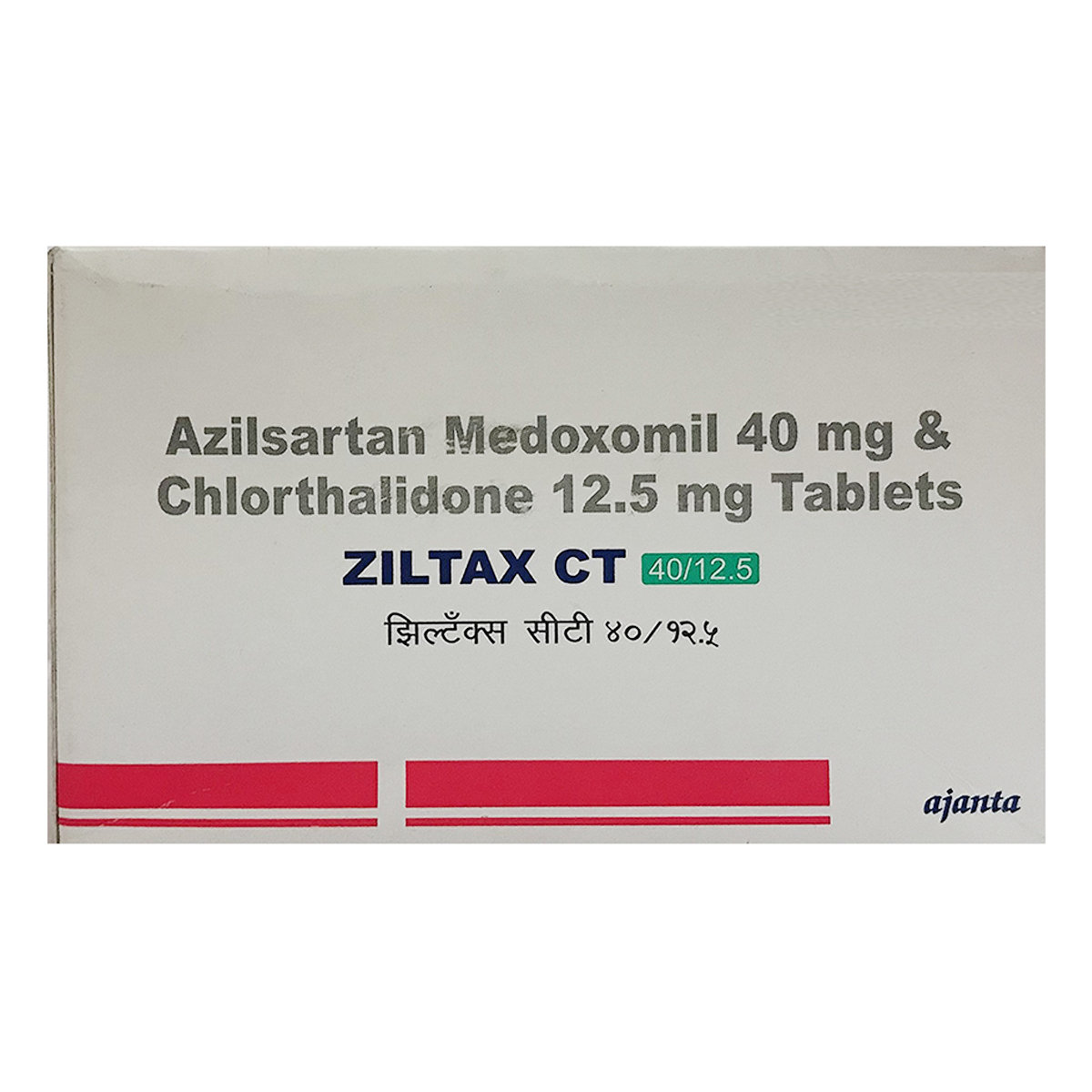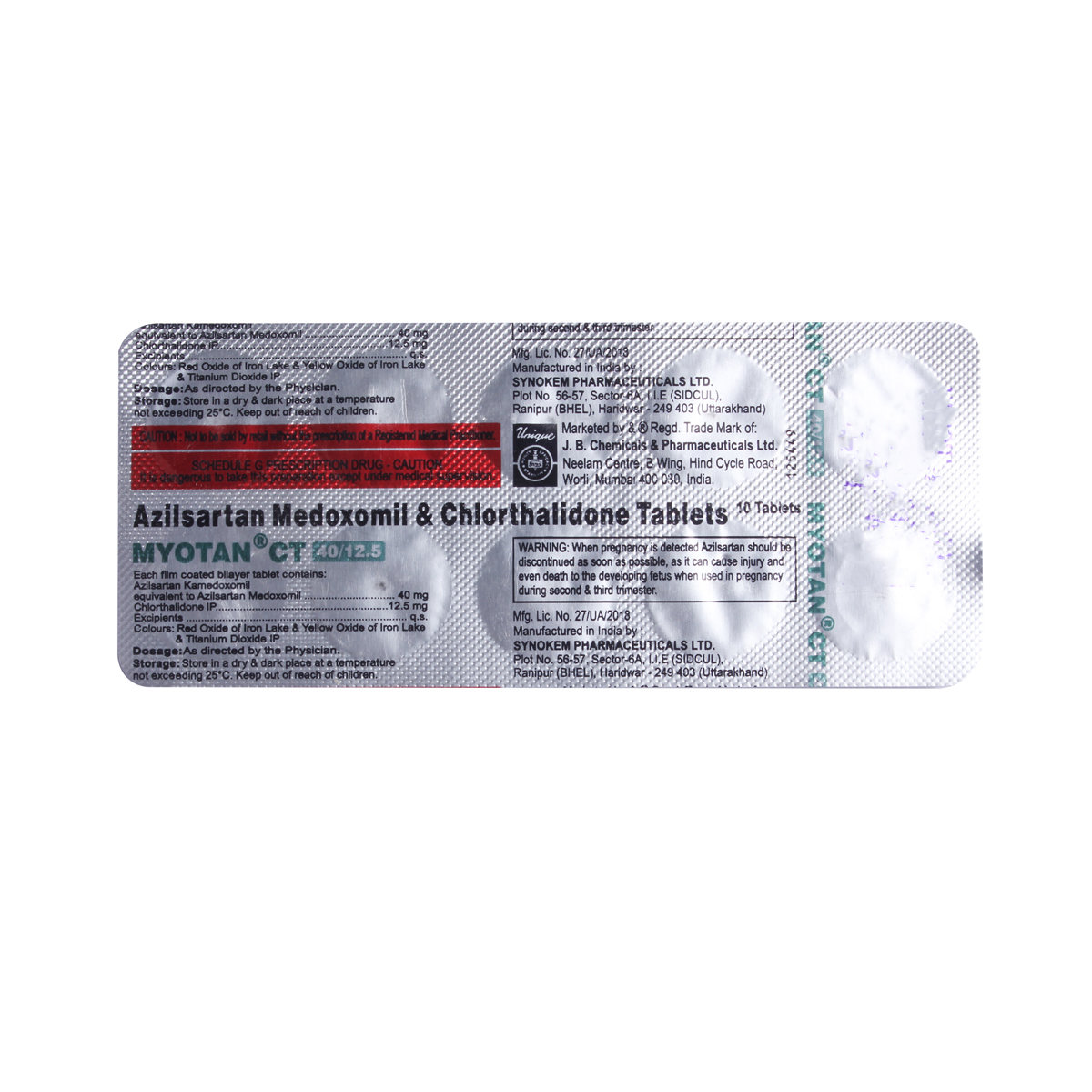Azildac CT Tablet

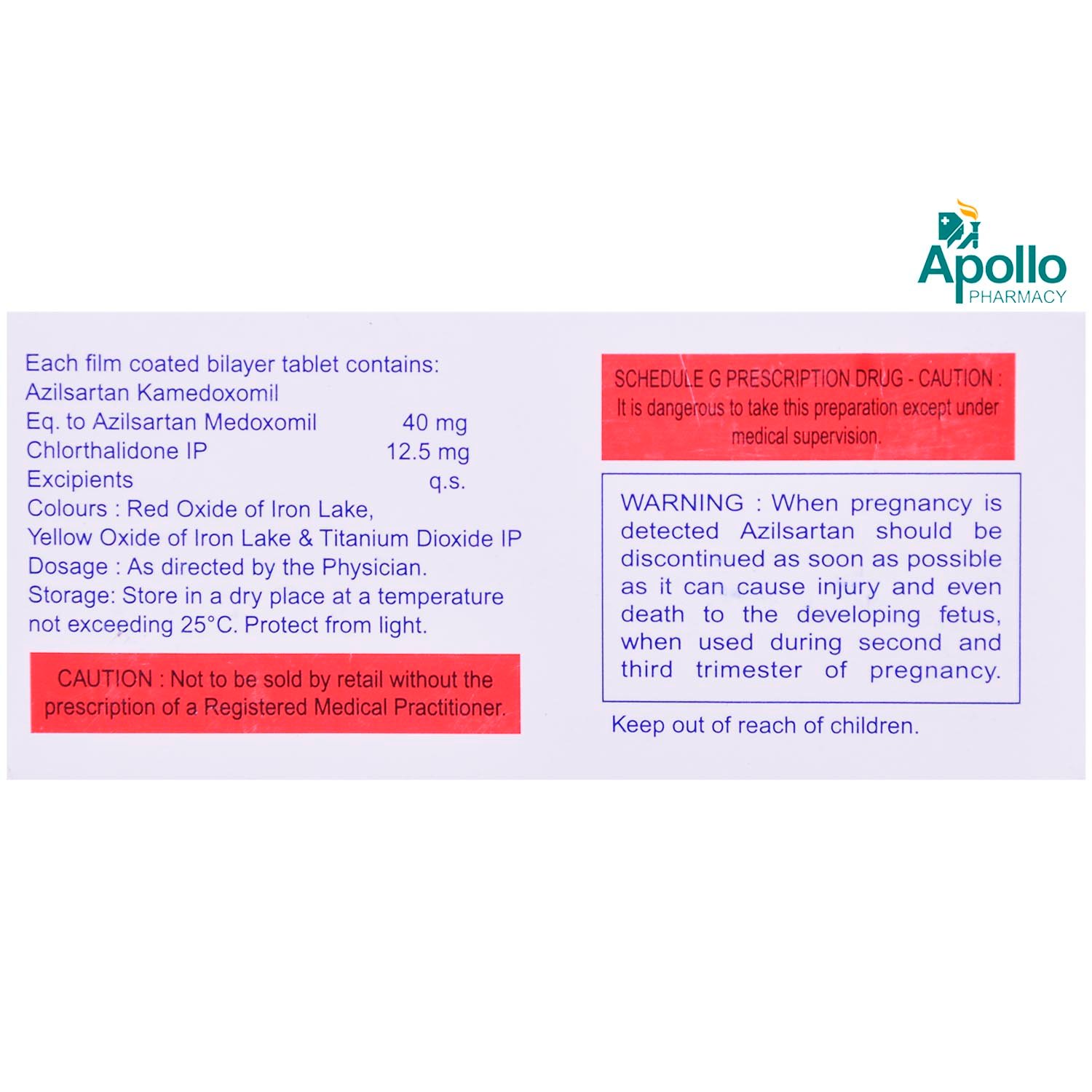
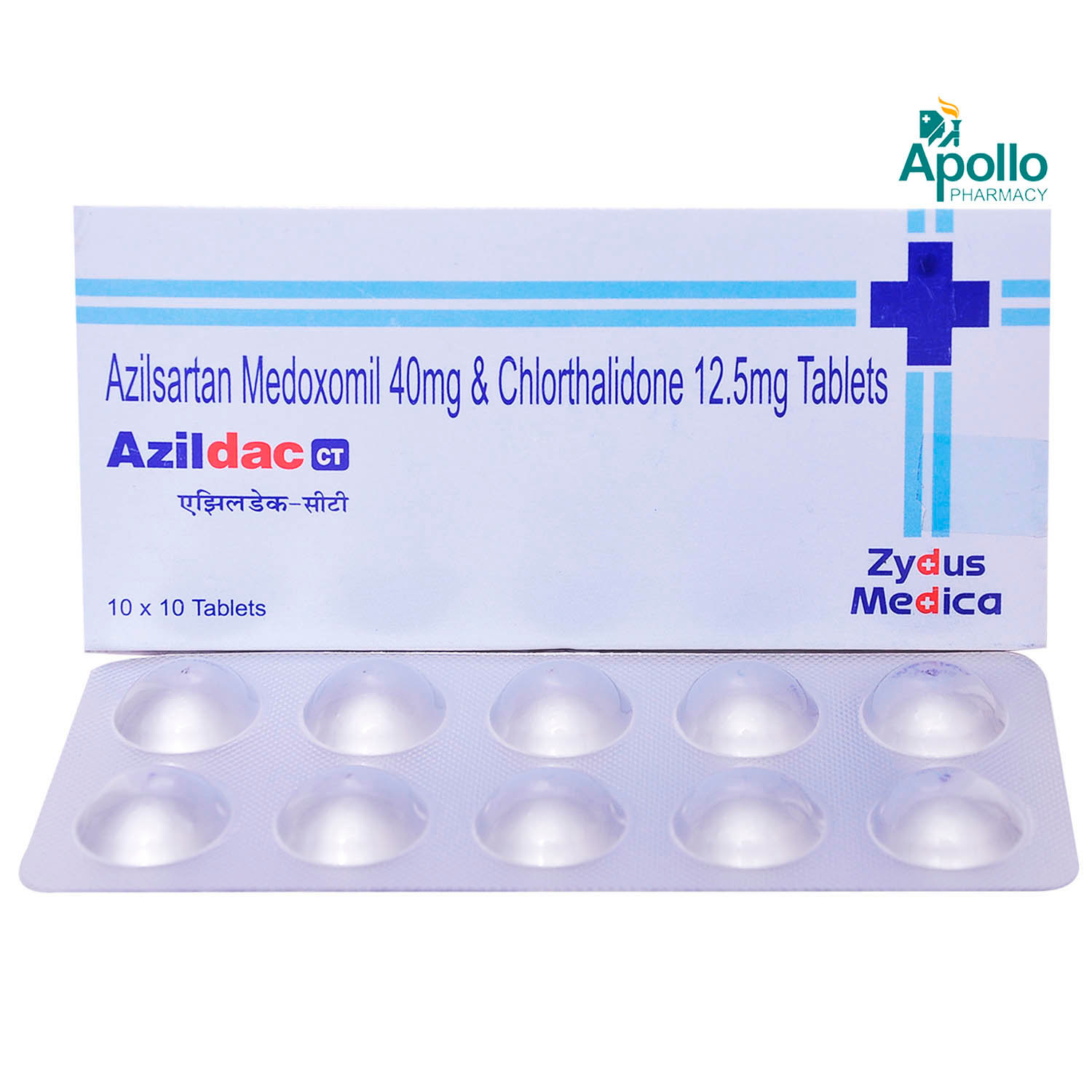
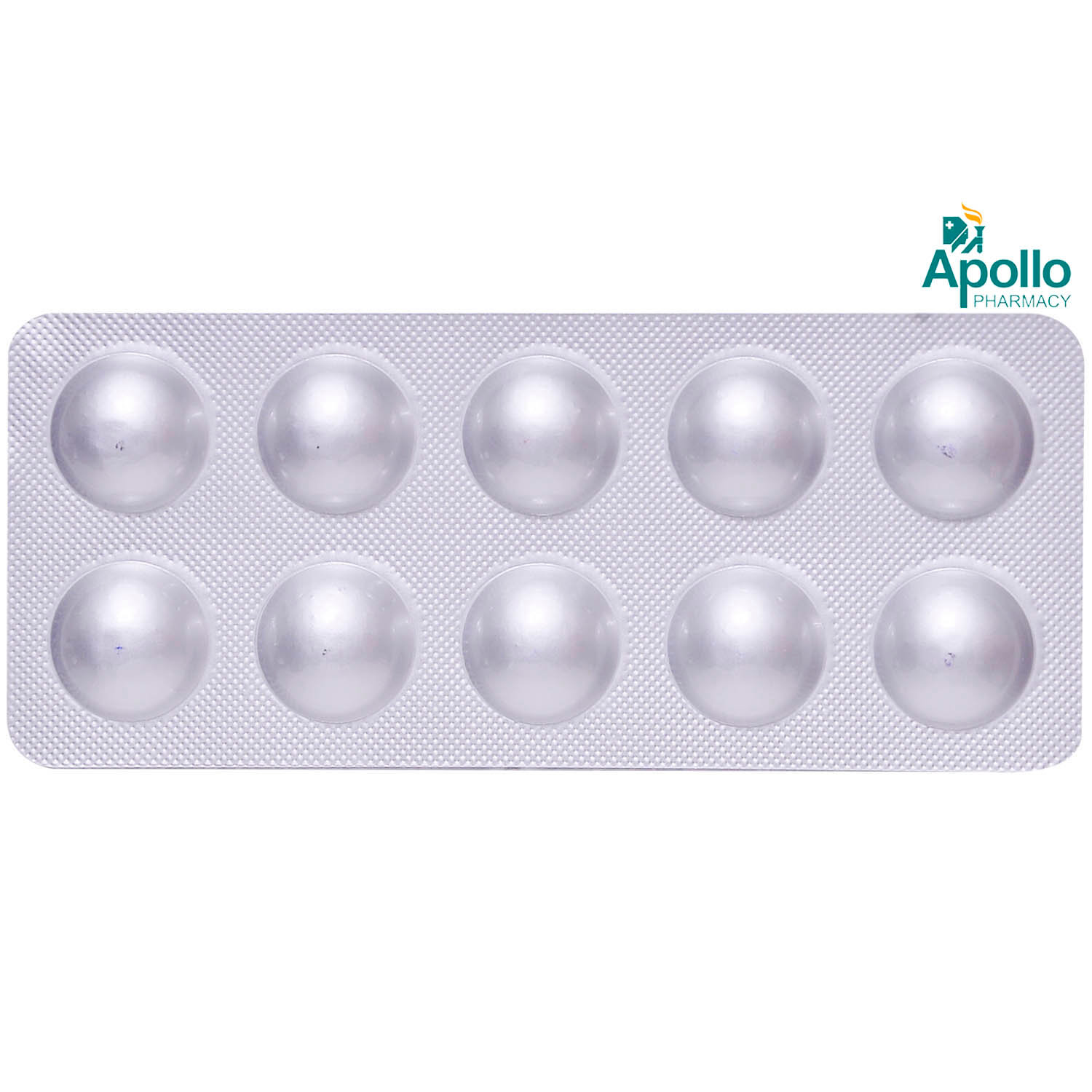
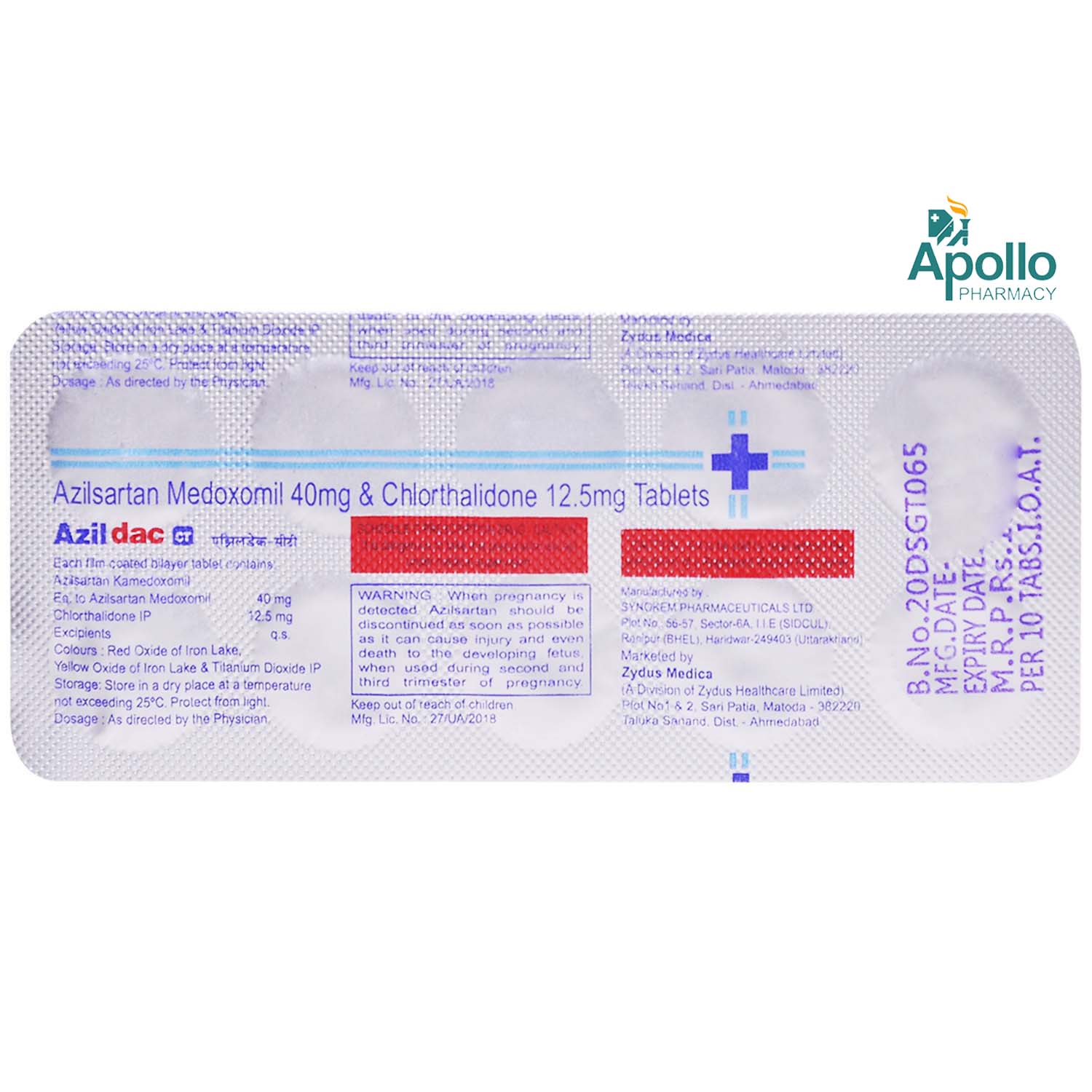
MRP ₹144
(Inclusive of all Taxes)
₹21.6 Cashback (15%)
know your delivery time
Provide Delivery Location
Composition :
Manufacturer/Marketer :
Consume Type :
Expires on or after :
Return Policy :

Secure Payment

Trusted by 8 Crore Indians

Genuine Products
Therapeutic Class
Country of origin
Manufacturer/Marketer address
Author Details
We provide you with authentic, trustworthy and relevant information
Disclaimer
Alcohol
Safe if prescribed
Avoid alcohol consumption with Azildac CT Tablet as it may cause increased dizziness.
Pregnancy
Consult your doctor
Azildac CT Tablet is not recommended for use during pregnancy since it may harm the baby. Consult your doctor before taking the Azildac CT Tablet if you plan to become pregnant or are already pregnant.
Breast Feeding
Consult your doctor
Please consult your doctor before taking Azildac CT Tablet if you are breastfeeding. Your doctor will decide if Azildac CT Tablet can be taken during lactation or not.
Driving
Safe if prescribed
Azildac CT Tablet may cause side effects like dizziness or tiredness. Hence, it is recommended not to drive or operate machinery until you are alert.
Liver
Consult your doctor
Let your doctor know if you have/had the liver disease before taking Azildac CT Tablet . Your doctor may adjust the dose accordingly.
Kidney
Consult your doctor
Let your doctor know if you have/had kidney disease before taking the Azildac CT Tablet . Your doctor may adjust the dose accordingly.
Children
Safe if prescribed
Safety and efficacy of Azildac CT Tablet have not been established in children.
Product Substitutes
About Azildac CT Tablet
Azildac CT Tablet belongs to the class of drugs called anti-hypertensive agents primarily used to treat high blood pressure (hypertension). Hypertension (high blood pressure) is a medical condition in which the blood pressure is elevated persistently in the arteries. High blood pressure is mostly caused by obesity, diabetes, smoking, high salt intake, stress, lack of physical activity or ageing.
Azildac CT Tablet consists of two medicines, namely: Azilsartan and Chlorthalidone. Azilsartan is an angiotensin receptor blocker (ARB) that works by blocking the hormone angiotensin. This helps relax the blood vessels, allowing the blood to flow more smoothly and the heart to pump more efficiently. Chlorthalidone belongs to thiazide diuretics (water pill) which inhibits fluid retention or build-up. Thus, it relaxes the blood vessels and improves blood circulation. Together, Azildac CT Tablet helps lower raised blood pressure.
Your doctor will decide the dosage and duration based on your medical condition. In some cases, Azildac CT Tablet can cause side effects like nausea, taste changes, stomach upset, diarrhoea, headache, weakness, dizziness, and decreased blood pressure. Most of these side effects of Azildac CT Tablet do not require medical attention and gradually resolve over time. However, if these side effects persist longer, please consult your doctor.
Before taking Azildac CT Tablet , let your doctor know if you have kidney, liver problems or severe dehydration. Avoid using Azildac CT Tablet if you are pregnant. Breastfeeding women should consult their doctor before taking Azildac CT Tablet . Do not consume alcohol with Azildac CT Tablet as it may increase the risk of side effects. Avoid driving or operating machinery if you experience dizziness. Keep your doctor informed about your health condition and medications to rule out any interactions.
Uses of Azildac CT Tablet
Medicinal Benefits Mweb
Key Benefits
Azildac CT Tablet is a combination of Azilsartan and Chlorthalidone. It is used to treat high blood pressure. Azilsartan is an angiotensin receptor blocker (ARB). It works by blocking the hormone angiotensin, thereby relaxing blood vessels. This allows the blood to flow more smoothly and the heart to pump more efficiently. Chlorthalidone is a diuretic that removes extra water and certain electrolytes from the body. Over time it also relaxes blood vessels and improves blood flow. Together, Azildac CT Tablet helps treat high blood pressure.
Directions for Use
Side Effects of Azildac CT Tablet
- Nausea
- Taste changes
- Stomach upset
- Diarrhoea
- Headache
- Weakness
- Dizziness
- Decreased blood pressure (hypotension)
Drug Warnings
Do not stop taking Azildac CT Tablet without your doctor's advice. Sudden stopping of Azildac CT Tablet may cause changes in your blood pressure. Inform your doctor about gout, electrolyte imbalance, dehydration, heart, kidney or liver problems. Consult your doctor before using Azildac CT Tablet if you are breastfeeding. Avoid taking Azildac CT Tablet if you are pregnant. Drive or operate machinery only if you are alert, as Azildac CT Tablet may cause dizziness. Avoid alcohol consumption as it may cause unpleasant side effects. Keep your doctor informed about your health condition and medications to rule out any side effects.
Drug-Drug Interactions
Drug-Drug Interactions
Login/Sign Up
Taking Aliskiren with Azildac CT Tablet can increase the risk of low blood pressure and high potassium levels in the body.
How to manage the interaction:
Taking Azildac CT Tablet with Aliskiren is generally avoided as it may lead to an interaction, it can be taken if prescribed by the doctor. Consult the doctor if you experience vomiting, weakness, tingling in your hands and feet, or palpitations. Make sure to hydrate while taking these medications. It is advised to reduce the intake of potassium-rich foods. Do not discontinue any medications without a doctor's advice.
Co-administration of Azildac CT Tablet and cisapride may increase the risk or severity of an irregular heart rhythm that may be serious.
How to manage the interaction:
Taking Azildac CT Tablet with Cisapride is not recommended, please consult your doctor before taking it. Do not discontinue the medication without consulting a doctor.
Taking Azildac CT Tablet with Enalapril may cause low blood pressure, kidney function impairment, and increased potassium levels in the blood.
How to manage the interaction:
Although taking Azildac CT Tablet with Enalapril together can result in an interaction, it can be taken if a doctor has prescribed it. Consult a doctor if you experience symptoms like vomiting, weakness, confusion, tingling in your hands and feet, or palpitations. Do not stop using any medications without talking to a doctor.
Taking Azildac CT Tablet with Ramipril may cause low blood pressure, kidney function impairment, and increased potassium levels in the blood.
How to manage the interaction:
Although taking Ramipril together with Azildac CT Tablet can result in an interaction, they can be taken together if prescribed by a doctor. However, consult a doctor if you experience vomiting, weakness, confusion, tingling in the hands and feet, or palpitations. Do not discontinue any medications without a doctor's advice.
Taking Azildac CT Tablet with Quinapril may cause low blood pressure, kidney function impairment, and increased potassium levels in the blood.
How to manage the interaction:
Although taking Azildac CT Tablet with Quinapril together can result in an interaction, it can be taken if a doctor has prescribed it. Consult a doctor if you experience vomiting, weakness, tingling in your hands and feet, or palpitations. Do not discontinue any medications without a doctor's advice.
Co-administration of Azildac CT Tablet with Amiloride may increase potassium levels in the blood.
How to manage the interaction:
Although taking Amiloride and Azildac CT Tablet may lead to an interaction but can be taken if prescribed by the doctor. However, consult the doctor if you experience vomiting, weakness, tingling in your hands and feet, or palpitations. Do not discontinue the medications without consulting a doctor.
Taking Azildac CT Tablet with Potassium iodide may cause low blood pressure, kidney function impairment, and increased potassium levels in the blood.
How to manage the interaction:
Although taking Azildac CT Tablet with Potassium iodide together can result in an interaction, it can be taken if a doctor has prescribed it. However, consult a doctor if you experience vomiting, weakness, tingling in your hands and feet, or palpitations. Do not discontinue any medications without a doctor's advice.
Taking Lithium with Azildac CT Tablet can increase the blood levels of Lithium.
How to manage the interaction:
Although taking Azildac CT Tablet and Lithium together can result in an interaction, it can be taken if a doctor has prescribed it. However, if you experience dizziness, vomiting, muscle weakness, ringing in the ears, excessive thirst, or increased urination, you should consult a doctor. Do not discontinue any medication without consulting a doctor.
Co-administration of Azildac CT Tablet with Amiloride may raise potassium levels in the blood.
How to manage the interaction:
Although taking Amiloride and Azildac CT Tablet together can result in an interaction, it can be taken if a doctor has prescribed it. However, consult a doctor if you happen to experience nausea, vomiting, weakness, disorientation, tingling in your hands and feet, feelings of heaviness in your legs, or a slow or irregular heartbeat. Do not discontinue any medications without a doctor's advice.
Taking Azildac CT Tablet with Potassium chloride may increase potassium levels in the blood.
How to manage the interaction:
Although taking Azildac CT Tablet with Potassium chloride together can result in an interaction, it can be taken if a doctor has prescribed it. Consult the doctor if you experience vomiting, weakness, tingling in your hands and feet, or palpitations. Do not discontinue any medications without a doctor's advice.
Drug-Food Interactions
Drug-Food Interactions
Login/Sign Up
Drug-Diseases Interactions
Drug-Diseases Interactions
Login/Sign Up
Drug-Drug Interactions Checker List
- METOPROLOL
- POTASSIUM CHLORIDE
- ASPIRIN
- CALCIUM CARBONATE
- MAGNESIUM HYDROXIDE
Habit Forming
Special Advise
- Keep a check on your daily blood pressure, and if you notice any fluctuations, please consult a doctor.
- Thiazide diuretics like Chlorthalidone may increase serum triglyceride and cholesterol levels. Hence it is advised to monitor your cholesterol levels regularly.
- Chlorthalidone in Azildac CT Tablet may interfere with specific lab tests like parathyroid and protein-bound iodide tests; hence, inform the person doing the tests that you are taking Azildac CT Tablet .
- Your doctor may advise you to get a regular kidney function test and blood examinations for potassium levels and other electrolytes while using Azildac CT Tablet to rule out any renal impairment.
- Regular monitoring of blood glucose levels is advised in diabetic patients while using Azildac CT Tablet .
Diet & Lifestyle Advise
- Do regular physical activity or exercise.
- Limit sodium chloride intake (table salt) in your daily diet.
- Avoid smoking and alcohol consumption.
- Avoid chronic stress, as it can raise your blood pressure. Try to enjoy and spend time with your loved ones to cope with stress.
- Try including heart-healthy omega-3 fatty acid-containing foods in your daily diet. You can also use low-fat cooking oils.
- A low salt/sodium diet and regular exercise are recommended along with Azildac CT Tablet for effective results.
All Substitutes & Brand Comparisons
RX
Out of StockMacarbi CH Tablet 10's
Macleods Pharmaceuticals Ltd
₹109
(₹9.81 per unit)
24% CHEAPERRX
Out of StockAzutan CT 40 mg/12.5 mg Tablet 15's
Ajanta Pharma Ltd
₹195
(₹11.7 per unit)
9% CHEAPERRX
Out of StockZiltax CT 40 Tablet 15's
Ajanta Pharma Ltd
₹195
(₹11.7 per unit)
9% CHEAPER

Have a query?
Buy best Cardiology products by
Torrent Pharmaceuticals Ltd
Sun Pharmaceutical Industries Ltd
Lupin Ltd
Intas Pharmaceuticals Ltd
Cipla Ltd
Micro Labs Ltd
Macleods Pharmaceuticals Ltd
Abbott India Ltd
Ajanta Pharma Ltd
Ipca Laboratories Ltd
Eris Life Sciences Ltd
Mankind Pharma Pvt Ltd
Lloyd Healthcare Pvt Ltd
Dr Reddy's Laboratories Ltd
Glenmark Pharmaceuticals Ltd
Emcure Pharmaceuticals Ltd
Alembic Pharmaceuticals Ltd
Alkem Laboratories Ltd
East West Pharma India Pvt Ltd
USV Pvt Ltd
Zydus Healthcare Ltd
Aristo Pharmaceuticals Pvt Ltd
Elbrit Life Sciences Pvt Ltd
J B Chemicals & Pharmaceuticals Ltd
Zydus Cadila
Akumentis Healthcare Ltd
Alteus Biogenics Pvt Ltd
Hbc Life Sciences Pvt Ltd
Fusion Health Care Pvt Ltd
Troikaa Pharmaceuticals Ltd
La Renon Healthcare Pvt Ltd
Corona Remedies Pvt Ltd
Jubilant Lifesciences Ltd
Medley Pharmaceuticals Ltd
Knoll Healthcare Pvt Ltd
Msn Laboratories Pvt Ltd
Zuventus Healthcare Ltd
Cadila Pharmaceuticals Ltd
Blue Cross Laboratories Pvt Ltd
Lividus Pharmaceuticals Pvt Ltd
Morepen Laboratories Ltd
Ranmarc Labs
Shrrishti Health Care Products Pvt Ltd
Sanofi India Ltd
Steris Healthcare
Elder Pharmaceuticals Ltd
Primus Remedies Pvt Ltd
Unison Pharmaceuticals Pvt Ltd
Eswar Therapeutics Pvt Ltd
Knoll Pharmaceuticals Ltd
Tas Med India Pvt Ltd
Systopic Laboratories Pvt Ltd
Indiabulls Pharmaceuticals Pvt Ltd
Leeford Healthcare Ltd
Sinsan Pharmaceuticals Pvt Ltd
Biochem Pharmaceutical Industries Ltd
Cadila Healthcare Ltd
Azkka Pharmaceuticals Pvt Ltd
Nirvana India Pvt Ltd
Orsim Pharma
Prevego Healthcare & Research Pvt Ltd
Econ Healthcare
Elinor Pharmaceuticals (P) Ltd
FDC Ltd
Sunij Pharma Pvt Ltd
Nicholas Piramal India Ltd
Astra Zeneca Pharma India Ltd
Pfizer Ltd
Lia Life Sciences Pvt Ltd
Shine Pharmaceuticals Ltd
Elicad Pharmaceuticals Pvt Ltd
Indoco Remedies Ltd
Proqol Health Care Pvt Ltd
Vasu Organics Pvt Ltd
Biocon Ltd
Opsis Care Lifesciences Pvt Ltd
Johnlee Pharmaceuticals Pvt Ltd
Merck Ltd
Wockhardt Ltd
Auspharma Pvt Ltd
Ergos Life Sciences Pvt Ltd
Lakshya Life Sciences Pvt Ltd
Ordain Health Care Global Pvt Ltd
Pficus De Med Pvt Ltd
ALICAN PHARMACEUTICAL PVT LTD
RPG Life Sciences Ltd
Glynis Pharmaceuticals Pvt Ltd
Orris Pharmaceuticals
Samarth Life Sciences Pvt Ltd
Aprica Pharmaceuticals Pvt Ltd
Aretaeus Pharmaceuticals Pvt Ltd
Koye Pharmaceuticals Pvt Ltd
Neocardiab Care
Retra Life Science Pvt Ltd
Alniche Life Sciences Pvt Ltd
Alvio Pharmaceuticals Pvt Ltd
Arkas Pharma Pvt Ltd
Atos Lifesciences Pvt Ltd
Divine Savior Pvt Ltd
Metalis Lifesciences Pvt Ltd





